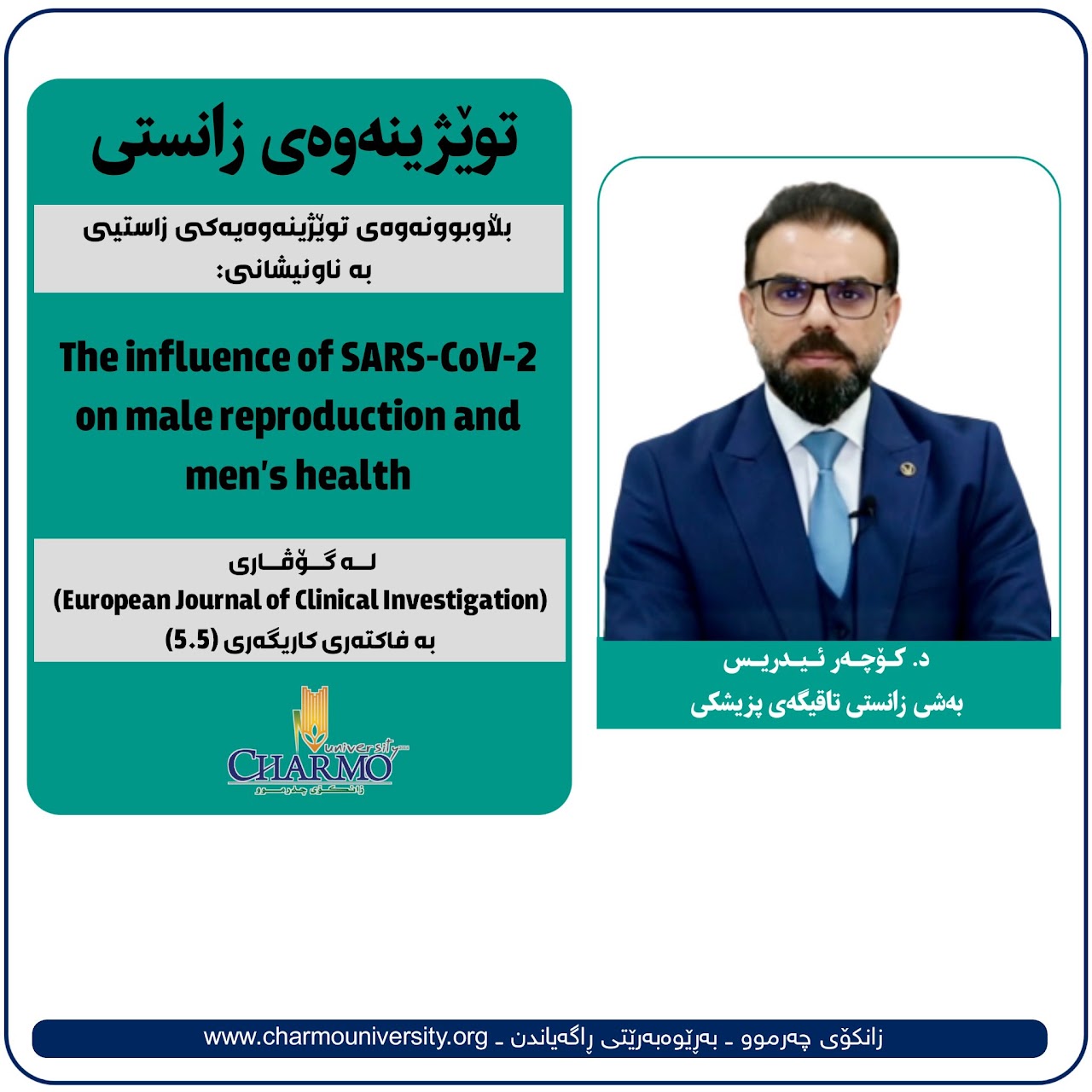Conference Proceeding Paper -
The influence of SARS‐C o V‐2 on male reproduction and men's health

Conference Proceeding Paper -
The influence of SARS‐C o V‐2 on male reproduction and men's health
The results indicated that all of the mentioned parameters were significantly affected during COVID-19 infection (PCR-ct, CRP, WBCs LH, FSH and testosterone levels, p-value = .0001). Furthermore, the study assessed TC, TM and sperm morphology in patients infected with SARS-CoV-2 and found that these parameters were also significantly influenced during the infection, (p-value = .0001; Morphology, p-value = .0004). We observed significant alterations in sperm count and morphology during infection, suggesting a potential negative impact on sperm quality. Additionally, lower hormone levels were observed during COVID-19 infection, possibly due to increased inflammatory cytokines. However, both hormones and inflammation markers returned to normal following recovery. Our findings indicate a statistically significant change in total sperm count, motility and morphology post-infection, which aligns with previous studies. Discussion, COVID-19 have a transient impact on sperm parameters and fertility, emphasizing the importance of further investigation into the long-term implications.
Ayad M Ali, Rahel F Abdlwahid, Kameran M Ali, Kochar I Mahmood, Peshnyar MA Rashid, Hassan M Rostam
Abstract
SARS-CoV-2, the virus responsible for COVID-19, primarily affects the respiratory system by targeting the Angiotensin-converting enzyme 2 (ACE2) receptor and TMPRSS2. However, these receptors are also present in other organs, including the testes, where a higher concentration of ACE2 receptors has been observed. This raises concerns about the potential impact of the virus on male fertility.
Aims
In this study, we aimed to assess the effects of SARS-CoV-2 on semen parameters by comparing samples during and after infection in the same patients.
Materials & Method
The study enrolled 51 individuals who had contracted COVID-19 and analysed various parameters related to sperm quality and quantity, including C-reactive protein, testosterone levels, total sperm concentration, motility and morphology. A comparison was made between these parameters during the initial infection with SARS-CoV-2 and after a 2- and 5-month recovery period.
Results
The results indicated that all of the mentioned parameters were significantly affected during COVID-19 infection (PCR-ct, CRP, WBCs LH, FSH and testosterone levels, p-value = .0001). Furthermore, the study assessed TC, TM and sperm morphology in patients infected with SARS-CoV-2 and found that these parameters were also significantly influenced during the infection, (p-value = .0001; Morphology, p-value = .0004). We observed significant alterations in sperm count and morphology during infection, suggesting a potential negative impact on sperm quality. Additionally, lower hormone levels were observed during COVID-19 infection, possibly due to increased inflammatory cytokines. However, both hormones and inflammation markers returned to normal following recovery. Our findings indicate a statistically significant change in total sperm count, motility and morphology post-infection, which aligns with previous studies. Discussion, COVID-19 have a transient impact on sperm parameters and fertility, emphasizing the importance of further investigation into the long-term implications.
Citation Information
[HTML] Age-Related COVID-19 Influence on Male Fertility
AD Shcherbitskaia, EM Komarova, YP Milyutina… - International Journal of …, 2023 - mdpi.com
The impact of coronavirus on the reproductive health of men attracts the special attention of
many researchers. While studies suggest changes in sperm parameters and the possibility …
Save
Cite All 3 versions
[PDF] IMPACTS OF HOST AND VIRAL GENETIC FACTORS ON COVID-19 SEVERITY IN SULAIMANI PROVINCE
PMA Rashid, GF Salih - researchgate.net
ABSTRACT The Coronavirus Disease 2019 (COVID-19) pandemic, is highly contagious
respiratory illness caused by the Severe Acute Respiratory Syndrome Coronavirus (SARS …
Save
Cite
[PDF] The Correlation between Vitamin D Status and Glycosylated Hemoglobin Levels
DA Jaf, NMQ Nanakali - University of Thi-Qar Journal Of Medicine, 2023 - jmed.utq.edu.iq
Results: The ANOVA analysis revealed significant differences in HbA1c levels across
Vitamin D groups (p< 0.05). Pairwise comparisons indicated substantial variations between …
5.5